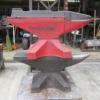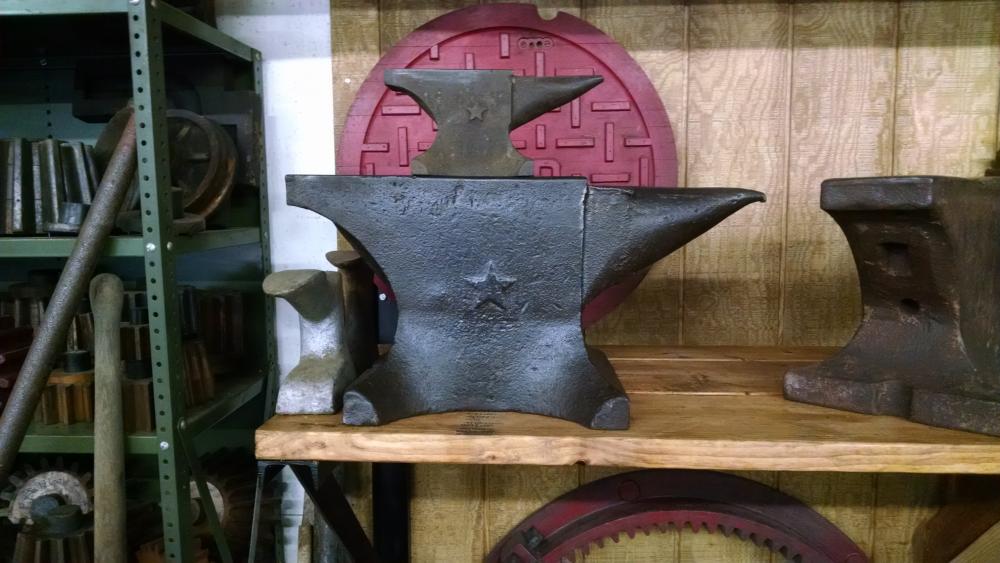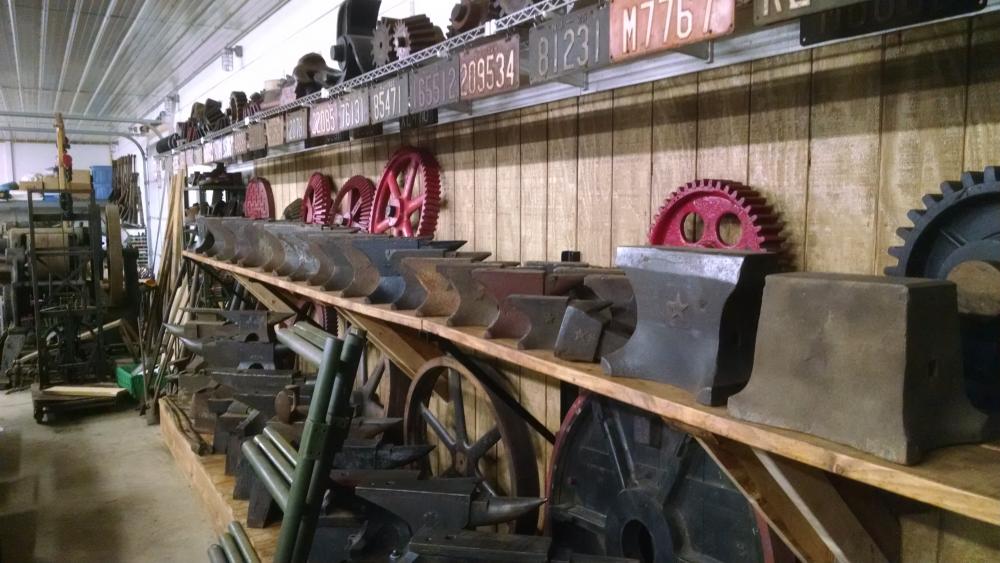-
Posts
2,481 -
Joined
-
Last visited
Content Type
Profiles
Forums
Articles
Gallery
Downloads
Events
Everything posted by njanvilman
-
Part of the problem is we do not know anything more about it than what you are reading here. There is not much information about these. I would love to add this to the museum, but not $800 worth of add.
-
Leave the face as is. No need to remove any of the hard face steel. An interesting anecdote for those with Fisher anvils made in 1907. That year was the most prolific for Fisher. They made more anvils that year than any other. I think I have 5 with that date in the museum.
-
Thanks Jim. I have been rebuilding and setting up new displays this winter. More pictures to follow.
- 39 replies
-
- American Star
- Trenton NJ
-
(and 1 more)
Tagged with:
-

394 lbs Peter Wright Anvil Found in Thailand
njanvilman replied to TonyBKK's topic in Anvil Reviews by brand
Amazing story of Industrial Archaeology. Boy, if only these could talk about the work done on them, and by whom.- 10 replies
-
- 394 lbs
- peter wright
-
(and 2 more)
Tagged with:
-
The indentation is a copy of what Fisher was doing at the time. The principals in the STAR foundry were former Fisher employees. Mark Fisher actually sued STAR for patent infringement, but lost. STAR did the "tempering cavity" and a few other things different enough to win the suit. As to why Fisher first put that shape into the base, one can only conjecture. Perhaps for mounting the anvil?
- 39 replies
-
- American Star
- Trenton NJ
-
(and 1 more)
Tagged with:
-
The STAR anvils in the Fisher & Norris Factory Museum. First picture is the smallest and biggest in the collection. 20 lb on top, 240 lb on the bottom. Second picture is the complete line-up. 240 lb on the far end, to a STAR stake, STAR hornless, and a STAR sawmakers. 23 STAR anvils in the line.
- 39 replies
-
- American Star
- Trenton NJ
-
(and 1 more)
Tagged with:
-
I did not go to either Memphis or Rapid City because of the heat. And from what I heard, I glad I missed them. The Delaware conference had great facilities and the weather was perfect. I think ABANA will have a hard time ever topping 2014.
-

Fisher Anvil ID Help please.
njanvilman replied to Truckman's topic in Anvils, Swage Blocks, and Mandrels
jerryt, so as not to infringe this thread, I will reply to you in a PM. -
This is one ABANA conference that I am going to miss. 2500 miles each way drive, or expensive plane ticket. But the biggest reason is that I do not think Salt Lake City in the middle of July will be hospitable. As I get older, I find hot(over 90 degree) weather too draining. So, I will wait to see where 2018 will be. If you have never been to an ABANA conference, I recommend you go. The demonstrators are usually tops, and they do try to make the conference as accommodating as can be expected.
-
The steel inserts on the horns on Fisher anvils were never hardened either.
-
I few pictures of your anvil would greatly assist us in helping you.
-

Fisher Anvil ID Help please.
njanvilman replied to Truckman's topic in Anvils, Swage Blocks, and Mandrels
According to Original Equipment Specs, a 6" x 21" face should be a 350 lb Fisher anvil. Yes, it is a Fisher. There might be a date on the sloping part under the heel. That is the year it was made. No, the stand is not an original Fisher stand. You can see where someone modified it by cutting out the frame for the mounting lugs. They did a good job. I doubt that with 350 lbs, and the snug fit, it would move at all. Any further bolting is not needed. Yes, your anvil appears to be in exceptional shape. Do not do anything to it except use it! -
The Foster anvils were one of the few brands of English anvils from that era with dates.
-
It looks like there is a braze repair on the movable jaw. Might or might not affect its operation. It does show that it was over-tightened at some point or had a bad casting.
-
No, do not try to weld to this. You will only ruin what is left. Use it as a beater anvil.
-

Howdy! Can you identify this for me?
njanvilman replied to eorlundgreymane's topic in Anvils, Swage Blocks, and Mandrels
Its a cast iron anvil. Not among the quality anvils out there. It will work, but just barely. -
I believe Fatfudd is correct. Looks like a beat up Vulcan. Good to let a beginner use; you cannot damage it much more.
-
Very interesting piece. Multiple hardy holes for multiple tooling.
-

Its really really a mystery
njanvilman replied to Shluke's topic in Anvils, Swage Blocks, and Mandrels
Someone did a lot of beating on that HB after the faceplate was gone. HB ceased manufacturing around 1930. -

Popular anvil geographically
njanvilman replied to scotto's topic in Anvils, Swage Blocks, and Mandrels
Once Fisher moved to Trenton, NJ in the 1850's, they moved most of their product by ship, then rail. Their factory was less than a mile from the main Pennsylvania Railroad mainline between Boston/NYC/Washington. That connected to all E/W lines. -
Going by the photographs, that 200 lb Fisher looks pretty normal to me. But it "could" have a slightly longer horn. Fisher specs for a 200 list the face as 17 1/4 " , and the horn as 11 1/2" long. If the horn is significantly longer that this, then it could have been a slightly custom job. Fisher advertised that they would make almost any size or shape the customer wanted. It is hard to see exactly the proportions in your photos. If you go to look at it, take a ruler and compare the anvil to the measurements I gave you. Most Fisher anvil made 1892 on, and between 100 and 400 lb had mounting lugs. Some 400 do not have them, some do. 100 is the smallest size with lugs.
-
It looks like an early (pre-1850) English made forged anvil. It could have been made by any of several hundred manufacturers of that era.
-

(Yet Another Request To) Identify My Anvil
njanvilman replied to Jon Reese's topic in Anvils, Swage Blocks, and Mandrels
Yes, the A does not change the date. I have two Trentons, and they all have the A in front of the serial number. -
The A31572 is the serial number, and according to AIA book, it was made in 1921. The 89 on the front is the weight in lbs that HB stamped on it at the factory.
-

170lb - Anvil or really nice shaped ASO?
njanvilman replied to Tubularfab's topic in Anvils, Swage Blocks, and Mandrels
Its an early English anvil, not a cast copy. A cast copy would not have the handling holes in the waist and the base.


